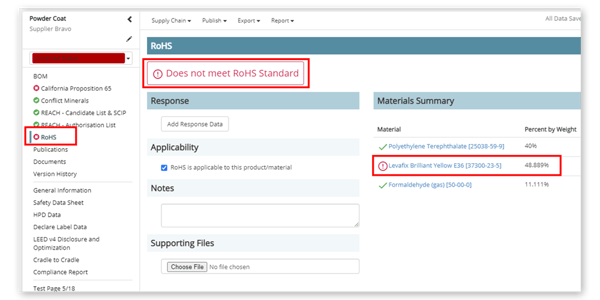RoHS stands for Restriction of Hazardous Substances (also known as, Directive 2002/95/EC) and is a regulation that was enacted in July of 2006 by the European Union. This standard specifically restricts hazardous substances found in electrical and electronic products, with 10 substances on this restricted list. This restriction applies to the electronic products themselves, sub-assemblies, components, or cables and cannot be sold or distributed in countries within the EU. While only technically applicable to products sold in the EU, this standard is observed by companies and industries around the world as supply chains become more connected to one another.
List of RoHS Restricted Substances
The RoHS Restricted Substances are as follows:
Cadmium (Cd): < 100 ppm
Lead (Pb): < 1000 ppm
Mercury (Hg): < 1000 ppm
Hexavalent Chromium: (Cr VI) < 1000 ppm
Polybrominated Biphenyls (PBB): < 1000 ppm
Polybrominated Diphenyl Ethers (PBDE): < 1000 ppm
Bis(2-Ethylhexyl) phthalate (DEHP): < 1000 ppm
Benzyl butyl phthalate (BBP): < 1000 ppm
Dibutyl phthalate (DBP): < 1000 ppm
Diisobutyl phthalate (DIBP): < 1000 ppm
Why is RoHS Important?
Technology and electronics are the forces behind the fastest growing businesses and industries around the globe. So much of our world depends on the ever-improving nature of the technology at our fingertips. With RoHS setting the standard for how toxic substances are used in technology, it is in the best financial interest of companies operating in this space to comply with RoHS standards. Because of regulations like RoHS, the safer products are, the more chance they have of being successful in economic markets everywhere. Not to mention, non-compliance can result in hefty fines amounting to millions of euros.
At its core, the founding reason behind RoHS is to prevent hazardous material from entering the environment and polluting landfills, while also protecting people from exposure during manufacturing and recycling. Operating within the compliance standard of RoHS provides the opportunity to make a tangible difference in the way we interact with our environment. Data suggests incredible reductions in the amount of toxic chemicals being disposed of in the environment because of the RoHS initiatives.
The preservation and protection of natural resources is a long-term investment for all of us.
Not only is technology one of the fastest growing industries, it is also one of the fastest changing. With RoHS guidelines in place, manufacturers have baseline knowledge of what substances are harmful and should be left out of supply chains. This leaves room to find more sustainable, efficient, and even cost-effective solutions that may have otherwise gone undiscovered. This is an opportunity to make better business decisions that benefit all parties involved.
How to screen against RoHS for free in Toxnot
The RoHS Restricted Substances list has 10 restricted materials, while 6 of those are groups of substances with many individual chemicals included. Toxnot stores and maintains the full list of over 800 chemical registry numbers (CAS number) that include these substances, accessible to anyone with a free Toxnot account.
In order to be able to screen your products and materials against RoHS compliance, all you need is a bill of material (BOM) OR data from your suppliers certifying compliance for the component they provide.
If you have just a BOM, Toxnot will automatically screen it for substances of concern at the threshold they are defined at in the RoHS standard.

If you have what we call “response data” from you or your suppliers (via supplier surveys), you can re-define compliance if your product or material meets any exceptions in the RoHS standard.

All of this information can be rolled up for several materials into a product. For example, if I have a chair with 10 components, I can have a RoHS compliance score for all 10 components. Once these are pulled into my final chair product, all of those RoHS scores will come together to produce a single compliance score for my chair.
Managing your RoHS can be accomplished right now free Toxnot account today - sign up with requires no implementation and is risk-free.


